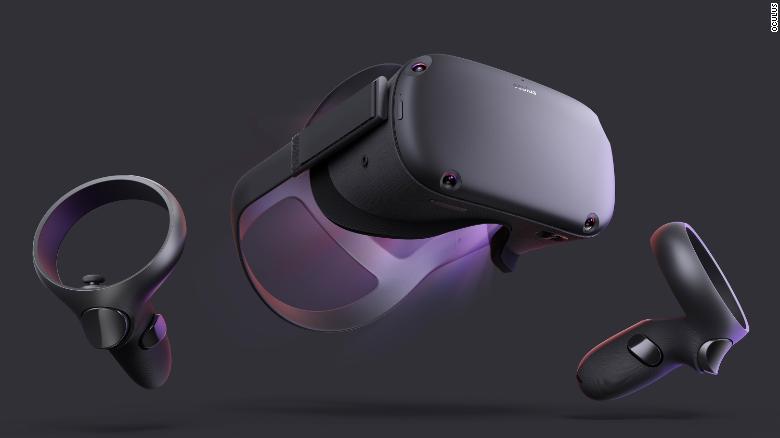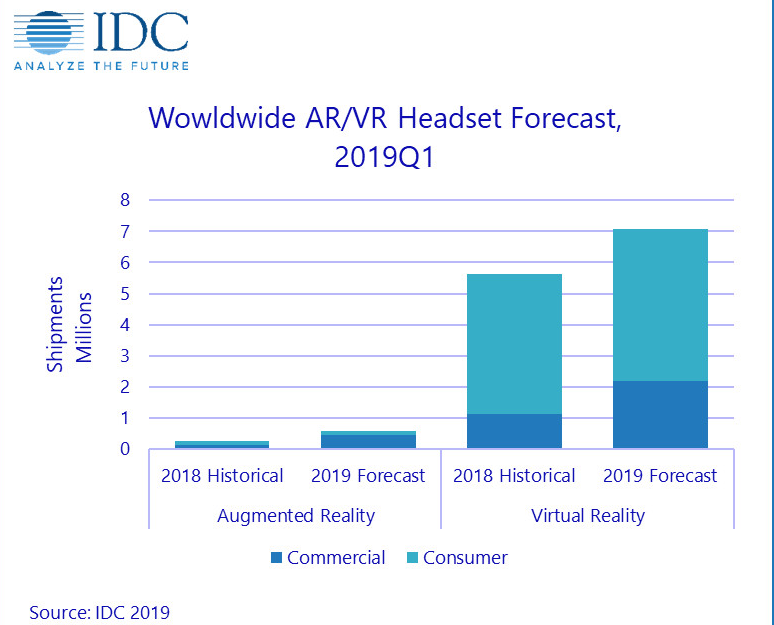2019 Has Been an Impressive Year for Virtual Reality Headset Sales
2019 has apparently been an impressive year for virtual and augmented reality players. Based on an IDC report released in late June, virtual reality and augmented reality headset shipments increased 27.2% year-to-year in the first quarter of 2019. According to the research firm, the strong market performance is also expected to increase for the rest of the year so expect the strong sales to continue throughout the year. The standalone headsets have proven particularly popular with users.

In spite of the traction in the AR market, the market is still largely driven by sales of VR headset sales which accounted for 96.6% of shipments in the first quarter of 2019. As the standalone augmented reality devices become available and as businesses continue to embrace enterprise AR solutions, the AR devices will increasingly account for a bigger share of the sales in the immersive technology industry. AR products are also likely to catch up on the sales with the introduction of more entry-level AR products.
Increasingly, the market will be dominated by the standalone headsets which do not require physically connecting to PCs, smartphones or gaming consoles. A good example of this is the Oculus Quest headset which has seen an enthusiastic reception and uptake. There will also be good uptake for headsets that rely on PCs but which have powerful specs such as the Oculus Rift S or the Vive Index headset, both of which have generated some buzz in the market. Many users are salivating at the prospect of having a really impressive immersive experience even if the headsets are tethered to a PC or smartphone.
In 2018, tethered virtual reality headsets accounted for 44.1% of the VR market sales while the standalone VR headsets made up 26.6% of the sales. Screenless viewers accounted for 29.3% of the sales. By the end of 2019, IDC projects that these proportions will change to 46.1%, 38.2% and 15.7% respectively.
Even the augmented reality market will increasingly be dependent on standalone headsets. According to IDC projections, the tetherless AR devices will account for 53.9% of the augmented reality market in 2019 compared to 47.8% for 2018. The tethered AR products will, on the other hand, account for 27% of the market while the screenless viewers will make up 19.1% of the AR market. Both the VR and AR projections indicate a strong preference for standalone or tetherless products going forward.
IDC projects that the shipments for the augmented reality and virtual reality market will hit 7.6 million units in 2019. This is a significant improvement from last year’s 5.9 million units. Most of this growth is happening in the commercial or enterprise market which will account for 1 in 3 of the shipments made this year.
For additional information on the performance and projections for the VR and AR market in 2019, check out the “Worldwide Quarterly Augmented and Virtual Reality Headset Tracker” which is available on the IDC website.
Below is also a simple overview by IDC on how the market is projected to pan out in 2019:-


